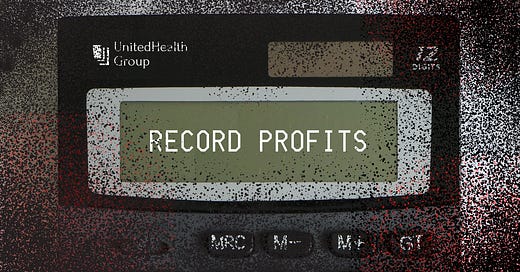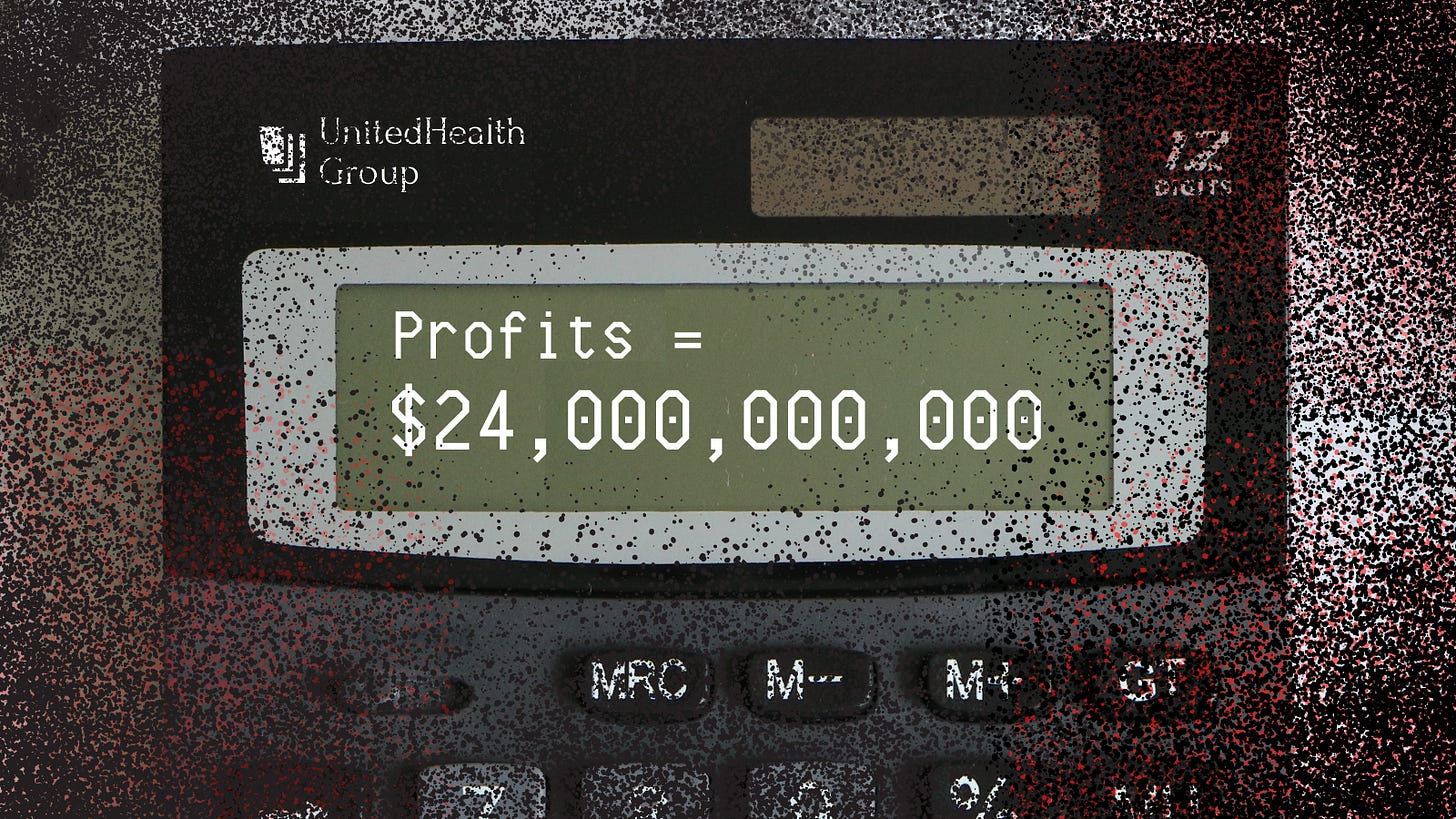While UnitedHealth reports $24 Billion in profits, Americans faced 200% increases in out-of-pockets over last decade
No insurer has ever made that kind of money in U.S. history.
Just days after a Commonwealth Fund report showed that American families are sending health insurance companies more and more of their income every year even as their deductibles skyrocket, the country’s biggest insurer reported massive 2021 profits and told investors to expect even higher 2022 profits.
UnitedHealth on Wednesday reported 2021 profits of $24 billion on revenue of $287.6 billion. Executives told Wall Street they expect United will be the first insurer to take in more than $300 billion from its customers this year.
Instead of giving its health plan customers relief from ever-increasing out-of-pocket requirements, United spent $5 billion last year buying back its own shares of stock, a gimmick that boosts the value of shares and makes shareholders richer. United also paid shareholders $5.3 billion in dividends in 2021.
No insurer has ever made that kind of money in U.S. history. It’s even more notable when you consider that United is not growing by attracting substantially more new customers.
At the end of 2021, United had about 26.6 million people enrolled in its commercial (individual and employer-sponsored) health plans. That’s just 700,000 more than the 25.9 million the company had 10 years ago. (Most of United’s membership and revenue growth now comes from the company’s Medicare Advantage plans and the state Medicaid programs it manages. In other words, from us as taxpayers.) United and other insurers are padding their top and bottom lines by charging their existing commercial customers higher and higher premiums every year.
Consider this: an employer-sponsored family policy that cost an average of $15,073 in 2011 cost $22,221 in 2021, a 47% increase, according to the Kaiser Family Foundation. And during that time, insurers have forced their health plan enrollees to pay more and more out of their own pockets through ever-increasing deductibles, copayments and coinsurance. Most Americans now have to pay on average twice as much out of their own pockets as they did 10 years ago.
That Commonwealth Fund report I mentioned earlier shows that with the relentless increase in both premiums and out-of-pockets, Americans are shelling out far more of their household income for health insurance and to cover out-of-pockets than a decade ago. Premiums and deductibles now take up more than 10% of median income in 37 states, up from just 10 in 2010.
Insurers argue that high deductibles are necessary to control premium increases. Unfortunately, most employers and policymakers seem to have bought that argument. But when you look at the research from both the Commonwealth Fund and Kaiser Family Foundation–and then the record profits United and other insurers are reporting–that talking point just doesn’t hold up.
Over the coming weeks, we will be using Commonwealth’s state-by-state data to show just how much Americans’ out-of-pockets costs have gone up over the last decade. We started with Alabama yesterday – where folks with employer-sponsored health insurance saw deductible increases of roughly 245% over the last decade.


For more state-by-state reporting of deductible increases, follow the Lower Out-of-Pockets NOW Coalition Twitter account here.





Ahh but of course you’re missing a key graph. So what did UHG do with that profit? Surely they’d return it to the employees that worked to the point of burnout in helping them generate those profits. Umm. No. The average employee will see merit increase of less than 2%. And what about bonuses? The pool will be funded at 80% again. I can’t wait to see the upcoming proxy. How much did the top keep for their selves???
Wendell, I certainly enjoyed hearing your updates of the health care crisis on the HCA-LA webinar earlier tonight. I once benefited from AARP-UHC Medicare supplemental Plan F until I found an insurance agent who found me a much cheaper plan with United World/Mutual of Omaha. $71/month less. I didn't realize that the supplemental coverage is the same for every company. Many seniors are unaware of the SHIP/HICAP ( in CA.) counselors who can help them to navigate the maze of plans. Traditional Medicare and the supplemental have covered my expensive health care at Stanford Hospital. I am guessing I have had a bill close to $500,000 there over the past 3 years with 4 operations, etc. I would be homeless if I didn't have Medicare and probably wouldn't have been able to get the care I have been getting. I am anxiously waiting the Assembly floor vote on Thursday or Monday. The whole country is counting on us!! Thanks, again!!